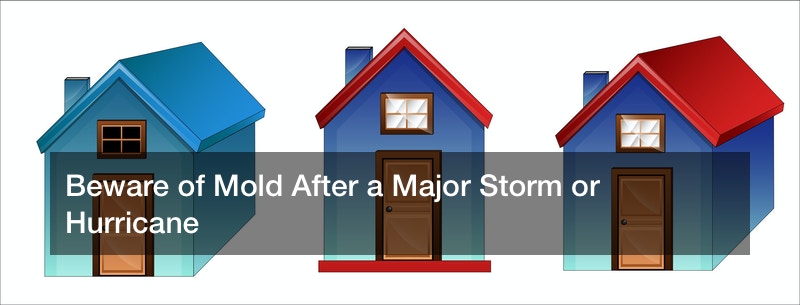
A single hurricane can stir up millions of miles of air, producing extremely strong winds, and dump more than 2.4 trillion gallons of rain per day. These storms can destroy homes, crush buildings, and wreck entire communities. In addition to the immediate flooding and physical damage to structures, mold is another serious problem commonly caused by hurricanes.
It only takes about 48 hours for mold to set in and the longer an area remains wet, the more likely the walls, flooring, and any item nearby will suffer from permanent damage. Additionally, mold can cause harm to you and your family. According to WECT, mold-related illnesses can seem like the common cold, but can be much more severe.
“Mold is not something people have talked about much before so it’s kind of not on everyone’s radar as to what that can make you feel like,” said Teresa Holler, a physicians assistant at Victory Health Consultants in Wilmington.
According to Holler, if anyone is experiencing unexplained health concerns following water damage and molding inside a home or commercial environment, they should seek professional help right away.
“These are more vague symptoms like dizziness or headaches or cognitive dysfunction, memory issues,” added Holler. “They call it a four-second delay where it just takes you a little too long to get your thoughts together. It can also cause depression and mood disorders and reduction in school performance in kids, vague symptoms you wouldn’t think to go looking for a diagnosis for.”
Additionally, here are some great tips for cleaning mold after a major storm or hurricane:
- Always wear protective clothing — Whenever you’re handling mold, make sure that you are wearing gloves, shoes, and a filter mask or respirator mask.
- Get rid of everything — You should remove any item in your home that was infected with mold. This can include ceiling tiles, wallboard, upholstery, fabrics, and paper products. Additionally, mold-infested carpets will likely have to either be professionally cleaned or completely replaced.
- Properly ventilate — In order to limit the mold from spreading around your home, isolate the molded areas and ventilate as much as you can. Open up all the windows in your home and install a few fans.
- Don’t start restoring until everything is dry — You need to ensure that your home is completely dry before you start restoring everything. If you can, get a moisture meter calibrated to the type of wood that’s in your home.
It’s important to remain as safe as possible during a storm, but know that you’re not out of the clear once the storm passes. Beware of mold following a storm and throughout the year!


